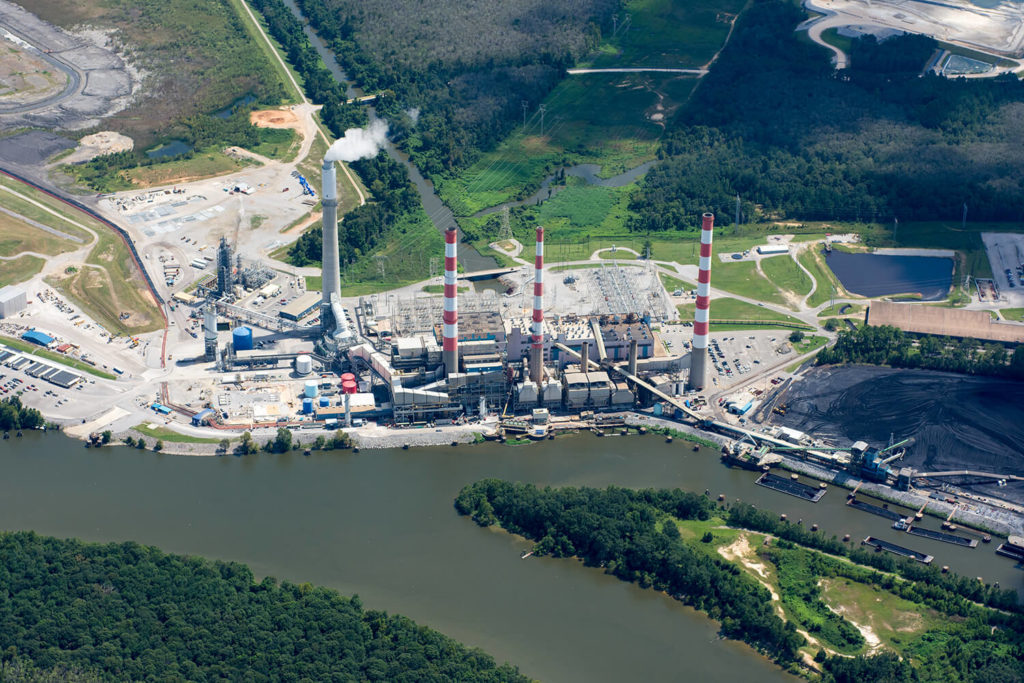Think of Alabama Power’s James M. Barry Electric Generating Plant as a power plant version of actress Zoe Saldana in the groundbreaking film Avatar. Saldana and other actors in the movie wore suits covered with sensors to record body movements and facial expressions—technology that equipped the production team to make the computer-generated characters come alive on screen. Like Saldana, Plant Barry is fitted with hundreds of sensors that record and relay data to provide operators with a detailed view of component behavior at the 2,370-megawatt facility powered by coal and natural gas.
Plant Barry has become a demonstration site where EPRI and Southern Company (Alabama Power’s parent company) are examining various digital technologies and techniques to optimize fossil plant operations. This work builds on EPRI’s I4GEN® initiative to equip power companies to achieve comprehensive digital plant operations.
Although utilities such as Southern Company are deploying more renewable energy, conventional power plants are expected to remain a part of the energy mix for many years to come. According to U.S. Energy Information Administration data, 100 gigawatts of coal-fired generating capacity in the United States have been retired over the past decade, and approximately 350 coal-fired plants with a combined capacity of 250 gigawatts continue to operate. To accommodate intermittent renewables, coal plants designed for baseload operation increasingly operate in flexible modes, such as load-following and cycling. This can take a physical toll on plant components, and new monitoring and maintenance measures are needed to keep facilities cost-competitive.

Digitalization can equip Plant Barry and other Southern Company generation facilities to transition from schedule-based maintenance to more cost-effective condition-based maintenance. Sensors throughout the plant provide real-time or near-real-time data about the conditions and performance of components and systems. Diagnostic software can analyze the data to identify anomalies, which can be addressed by digital controls.
“When fossil plants operate in flexible modes, different components are going to wear out and break in different ways and at different rates,” said EPRI Program Manager Susan Maley. “If you have the right information at the right time, plant staff can make better decisions on difficult questions. Should a piece of equipment be taken offline for maintenance? Or is a certain amount of damage acceptable for that equipment in order to keep the plant fully operational and economically viable?”
Southern Company views digitalization as a key element of its strategy to decarbonize its generation fleet. EPRI expects that these digital technologies can be applied to hydroelectric, wind, and solar power plants.
“This demonstration facility will accelerate emerging technologies and enable digital transformation of a power plant,” said Chethan Acharya, the Southern Company principal research engineer leading the Plant Barry digitalization project. “Instead of conducting several small projects at different sites, EPRI and Southern Company determined it would be more effective to develop a research center where various stakeholders can collaborate. Partnering with EPRI makes it possible to engage additional technology developers and examine a full-scale plant digitalization.”
The hardware, software, and other digital technologies for the five-year demonstration project at Plant Barry are under development. These include:
- Advanced controls to automate plant operations
- Advanced equipment sensors, such as those that can be immersed in a machine’s lubricating oil to provide continuous data on oil quality
- Wireless communications in the plant
- Communications to off-site data processing centers that can alert operators to abnormal conditions
- Prognostic tools for operations and maintenance
- Cyber security for the installed technologies
Hundreds of additional sensors are expected to be deployed over the course of the Plant Barry demonstration.
“We are starting with a pilot-scale demonstration to validate findings before full-scale technology implementation,” said Acharya. “We expect this research to reduce our generation fleet’s operations and maintenance costs and increase reliability.”
“Whether it’s new sensors, augmented reality headsets for field technicians, or data analytics, digital technologies can work together to improve plant processes,” said Maley. “With the Plant Barry demonstration, we’re taking an integrated approach, examining the benefits of deploying a suite of techniques and technologies in a systematic way.”
EPRI seeks to work with utilities large and small to launch other full-scale digital demonstration facilities.
A Target to Monitor 120,000 Power Plant Parameters in New York
New York Power Authority (NYPA) is collaborating with EPRI on digital transformation of its generation and transmission assets. Paul Tartaglia, NYPA’s chief technology and innovation officer, says that the value of data from digitalization comes not from collecting more of it but from using it effectively.
“By analyzing power plant data with advanced pattern recognition software, we can observe changes and trends across thousands of pieces of equipment in more than a dozen generating facilities that are monitored 24 hours a day, 365 days a year,” said Tartaglia. “We are able to identify abnormal equipment behaviors and address them well before failure. Without these digital technologies, you would need thousands of analysts to look at all the data.”
NYPA aims to increase the number of data points in its fleet operations from 45,000 to 120,000. This can better position NYPA to cycle its fossil plants, integrate renewable energy generation, and prepare for other changes, Tartaglia said.
“We’re using data analytics not only to extract value out of our fleet’s existing operating modes, but also to prepare us for new operating paradigms that emerge in the future energy grid,” he said.
Key EPRI Technical Experts:
Susan Maley
For more information, contact techexpert@eprijournal.com.
Artwork by Ariel Davis

